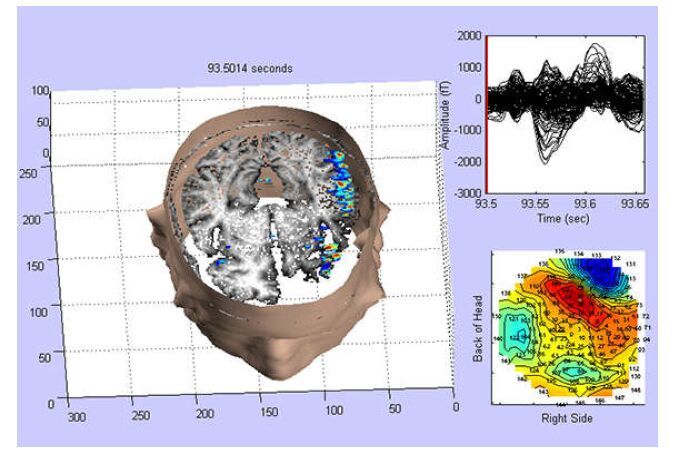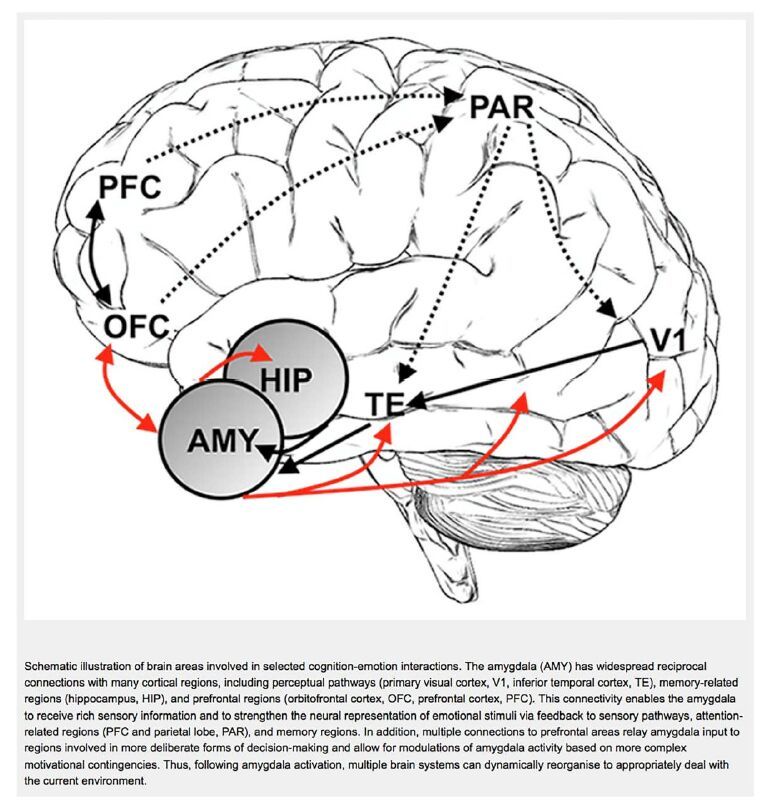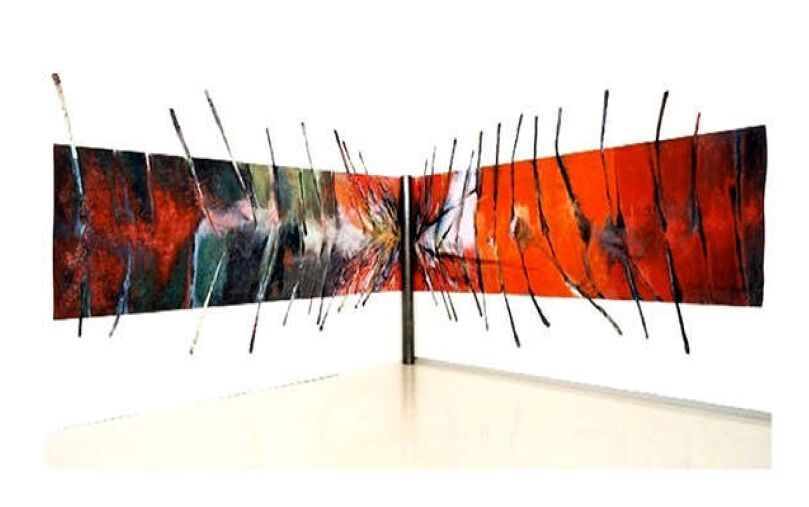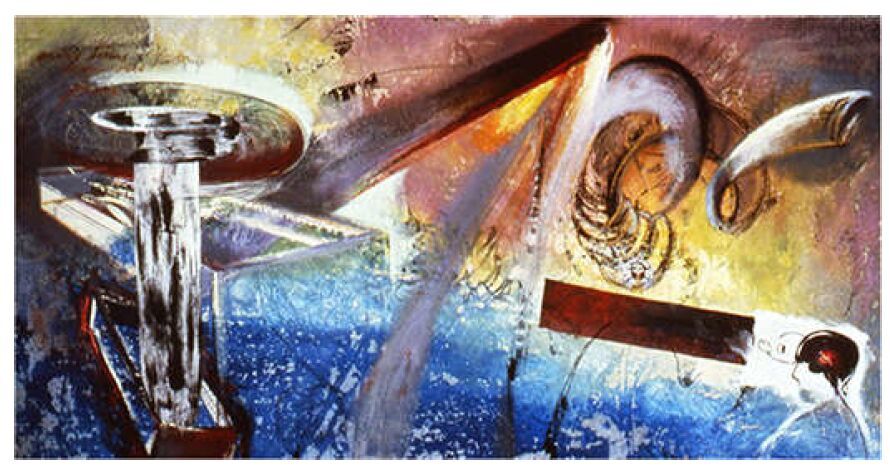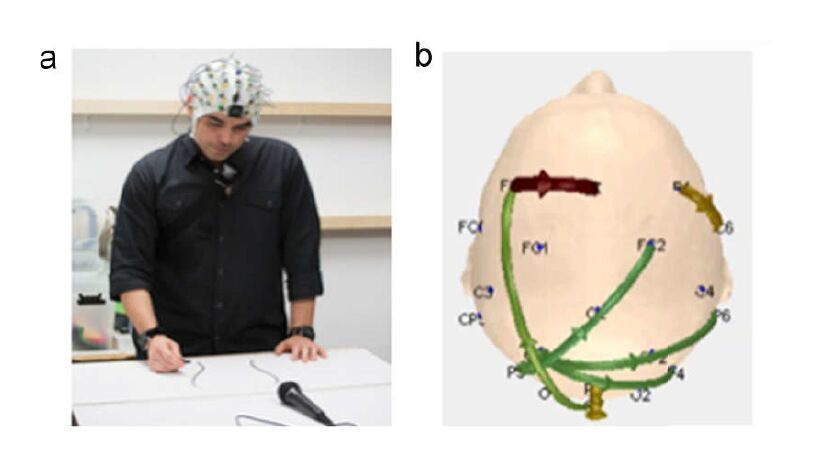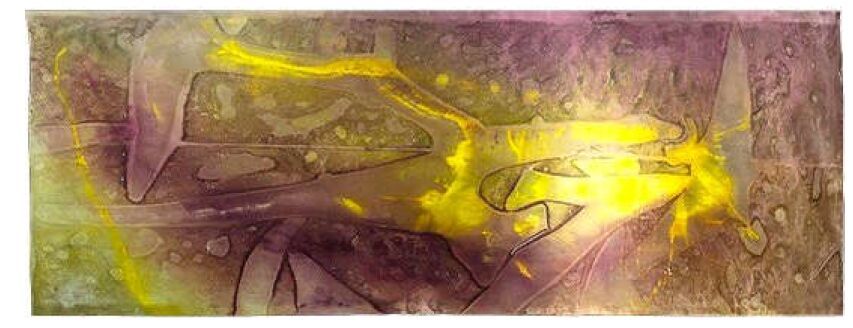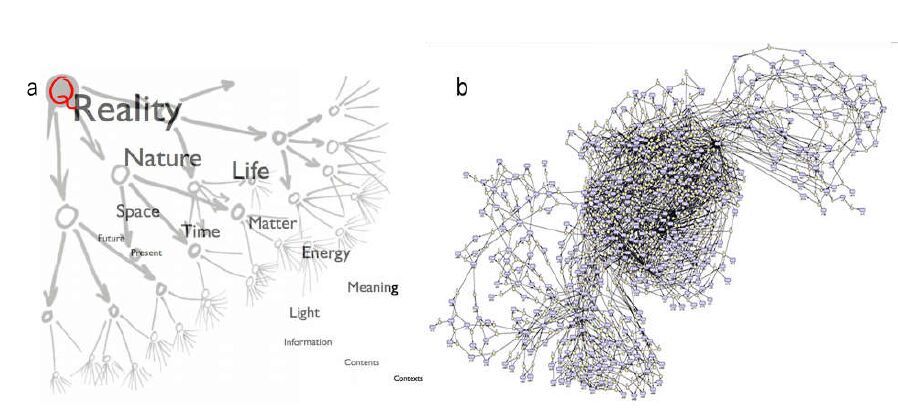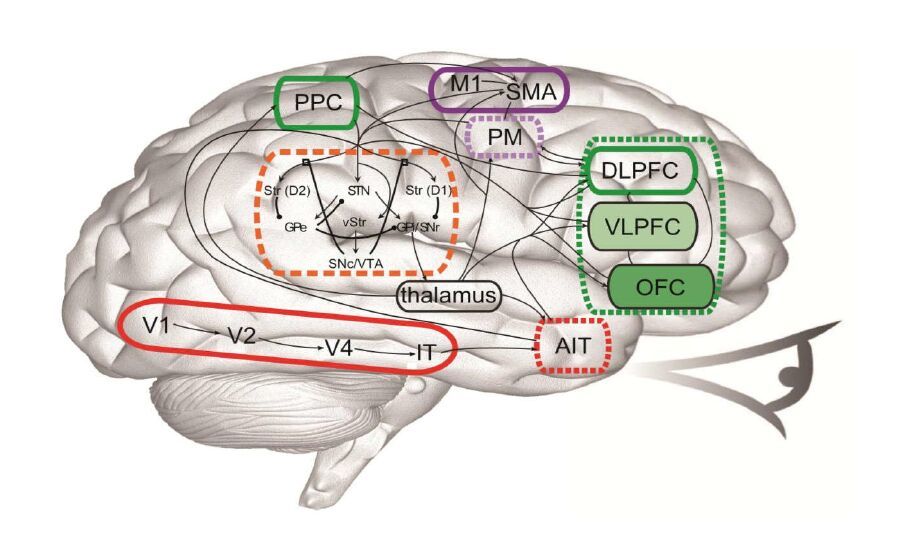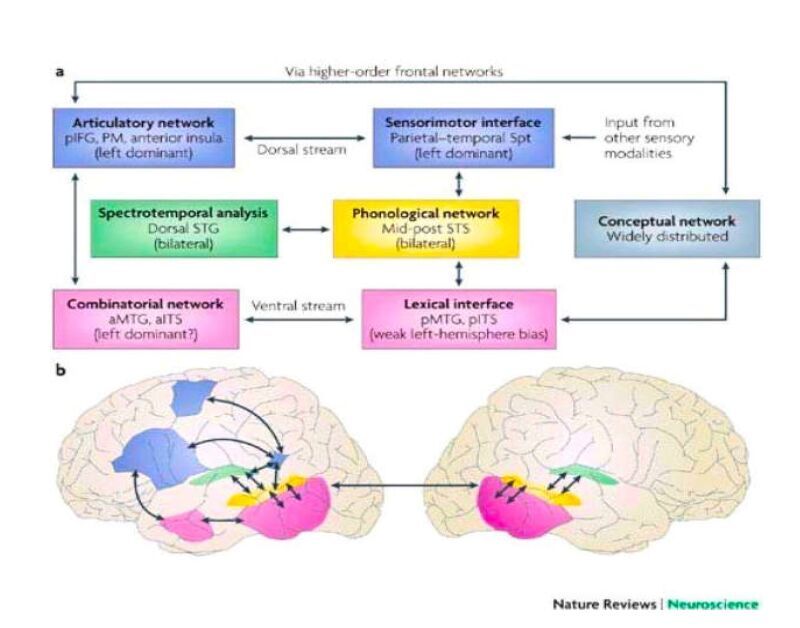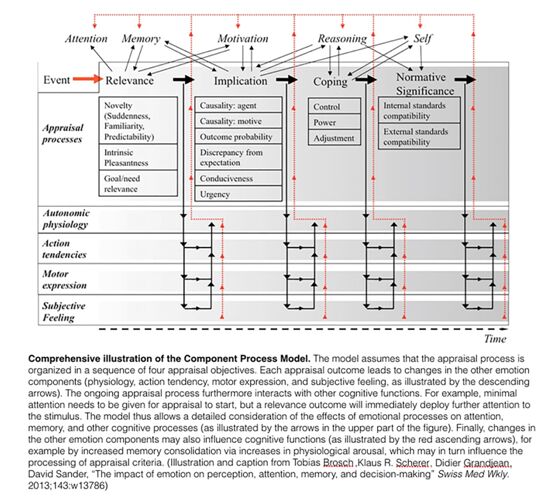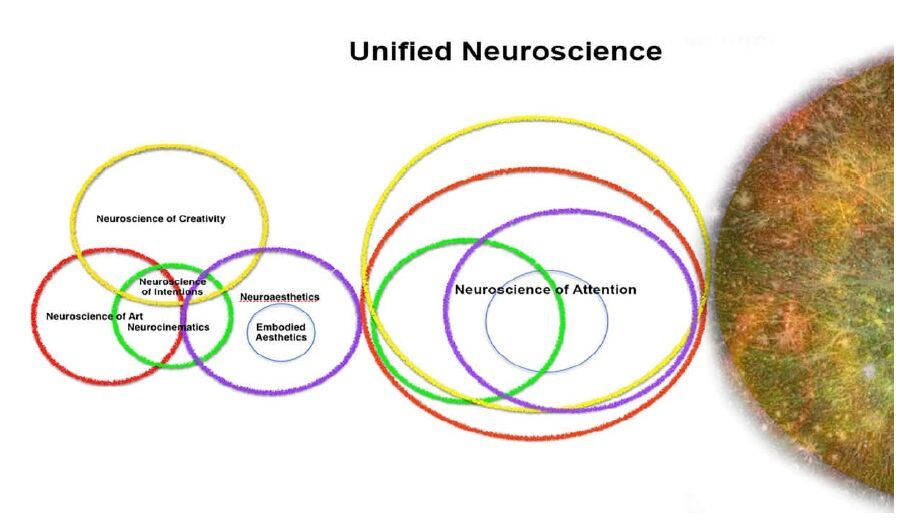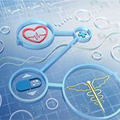1. Introduction
Art makes us aware that we’re often unaware of the world around us and within us. For instance, in listening attentively to Samuel Barber's haunting Adagio for Stringswhile watching Oliver Stone’s Academy Award-Winning film Platoon(1986), you may experience profound sadness and empathy evoked by Barber’s String Quartet, Opus 11. Perhaps, you never imagined you could ever feel this way when reflecting on the lives of young soldiers who lost their sense of humanity, or died senselessly in Vietnam’s guerrilla warfare and attrition warfare. These deep emotions move the minds and hearts of most human beings who are absorbed by this music, which the music critic Thomas Larson describes as The Saddest Music Ever Written (2010).
Today, we can see why and how our attention changes when the orchestra and music changes. The bevy of advanced noninvasive imaging tools and methods available to researchers today—(fMRI), Magnetoencephalography (MEG), Positron Emission Tomography (PET), single-photon emission computed tomography (SPECT), visual evoked potentials (VEPs), brain-stem auditory evoked potentials (BAEPs), and Electroencephalography (EEG) enable neuroscientists to observe the brain dynamics associated with attentional mechanisms. Furthermore, researchers can interpret these details and explore more complex inferences than ever before, aided by some powerful methods for deciphering neural codes and illuminating the brain’s symbolic languages (e.g., Psychometrics). These neuroscientific tools and methods allow researchers to dig deeply into the possible meanings and implications of these codes and languages. In every respect, the big data-gathering and mining projects, such as the Human Connectome Project [1,2] and Brainnetome research [3], the Brain Initiative [4], and Neuroinformatics [5], are beginning to mirror the deep complexity of the ever-evolving system they aim to understand and model, including the attention system (Figure 1).
The attention system, which has ties to the associative and interpretative processes, allows us to connect emotionally with this timeless, evocative music. This system shapes our experiences of making art and appreciating its infinite forms and expressions. Understanding these aesthetic experiences and the neural mechanisms that support them are being adventurously explored in the neuroscience of creativity [6], the neuroscience of art [7,8], neuroesthetics [9,10], neurocinematics [11], embodied aesthetics [12], and related areas of research.
2. What Constitutes Attention? What Counts as A Complete Model of Attentional Mechanisms?
Attention encompasses all forms of consciousness in countless everyday instances. For example, seeing things we’re interested in seeing, or remaining willfully blind to things we don’t care to see for whatever reason. Hearing things we want to hear, or turning a deaf ear to sounds and things that disturb us? Touching and feeling things we desire to touch, or remembering to avoid touching things that can harm us? Tasting things we crave, or resisting the impulse to taste and eat everything our physicians red flag in an effort to protect our health and well-being?
These common acts of consciousness and attention we all know.
How does the human brain’s attention system decide what signals to attend to or ignoremomentarily? There appears to be some sort of split-second decision-making process that takes place in a number of independent, yet interconnected, brain networks [13,14]; specifically, the anterior and posterior cingulate gyrus [15,16]. Studies in effort-based decision making also confirm the influence of the amygdala-prefrontal cortical circuitry on the attentional mechanisms [17].
Perhaps, one cortical or subcortical system, such as the limbic system, plays a pivotal roleconducting ”the symphony” inside our brain, to borrow a metaphor used by Dr. Francis Collins (2012), Director of the National Institutes of Health (NIH). Indeed, one can think of the tracks of moving water coursing through neural tissue using diffusion spectrum imaging [18] as thecompositional elements of a tone poem representing the beautiful flux of neural events occurring in real-time between and within brain hemispheres.
Or, perhaps, the attentional mechanisms behave more like the “Conductor-less Orchestra”described by Harvey Seifter, the Executive Director of Orpheus Chamber Orchestra and co-author of Leadership Ensemble: Lessons in Collaborative Management from the World’s Only Conductorless Orchestra (2001) in this way: “Knowledge workers are not limited to the world of high-tech, New Economy business. They are found in every industry and every business and, as Peter Drucker
[a world-renowned leadership consultant] has pointed out, in some surprising places—including symphony orchestras. And one orchestra in particular—New York City-based Orpheus ChamberOrchestra—has become a model for Kanter’s new kind of loose and flexible organization…In most orchestras, the conductor directly supervises each musician; the conductor not only decides whatmusic will be played but how it will be played as well. There is little rooms for the opinions orsuggestions of the musicians themselves; such input is rarely solicited and even less often welcomed. Like workers reporting to an autocratic manager, orchestral musicians are expected tounquestioningly follow the direction of the conductor—anything less invites humiliation before one’s colleagues and may be grounds for immediate dismissal” [19].
Maybe, the style of “collaborative leadership” in the human brain, so to speak, resembles the self-organizing systems of musicians paralleling playing in an intuitive, responsive and adaptive manner. Implying, the brain networks “share and rotate leadership, ” to use an expression related to the Orpheus Process, which, and I quote, ‘translates the communal creativity of a small, four-piece chamber music group—where each musician has an equal voice in determining how a piece of music will be played—into the much larger and more complex setting of an orchestra” [20].
If we were to observe the brain’s “communal creativity” using a MEG scanner, which detects immensely subtle electrical activity with excellent temporal resolution (1 millisecond) as measured by an array of SQUID magnetometers (Superconductive Quantum Interference Device) focused on three square centimeters of cortical and subcortical tissue (Figure 2), we can see the attentionalmechanisms at work and play in great detail. We can see how he attention system influences every aspect of learning, decision-making and related cognitive and affective processes that make itpossible to make art. The attentional mechanisms enable us to remain alert and engaged in creating, discovering, and learning things we care about because they’re important to us. Perhaps, in the same way the oxytonergic circuitry enables creative cognition [21], the attention system supports andsustains this circuitry as well. It allows us to focus. Without some focusing mechanisms, our nervous system would be overwhelmed by the barrage of information our sensory, affective, and andcognitive net works manage all the time.
3. The Content-specific and Context-specific Aspects of Attention
Attention is a multifaceted phenomena with many shades of gray. I hypothesize that it is content-specific and context-specific. Meaning, depending on an individual’s likes, or one’s personal interests or fascinations, or passions, the attentional mechanisms will favor operating on information (content) that these things and dedicate more processing time than performing common tasks its components correlates of consciousness and attention will vary significantly. In effect, our sense of attention is fine-tuned the more deeply we become drawn into things that intrigue us and spark our curiosity.
In attending to the information in this article, I encourage readers to exercise imagination as “neurotranslators”. Meaning, you’re welcome to translate the intentional actions visualized in these symbolic artworks (Figures 4,5, and 7), which embody and depict attentional mechanisms that I’ve detailed to the best of my knowledge. As you mull over my introspective descriptions of each work of art, try relating my neuro-impressions [22] to information (data, knowledge, concepts, theories, empirical studies, etc.) that is most relevant to your work, area of expertise and personal interests. For example, if you’re a cognitive neuroscientist, you may be inclined to interpret the attentional mechanisms I’ve highlighted differently in your neurotranslations of these artworks than, say, a molecular biologist, or neuropsychologist, or biophysicist.
As apassionate practitioner of the arts and sciences, I sincerely express this exhortation without hyperbole: I only know the world through art. Everything in the world is a form and function of art, metaphorically speaking. Including science and technology. Including math and economics.Including informal learning and formal education. Including every form of human knowledge we have used throughout history to represent explicit knowledge, personal knowledge [23] and tacitknowledge [24]. Based on a lifetime of personal and professional experiences exploring the nature of art and thought, I’ve concluded: Art encompasses all representations of thought, using all forms of symbolic languages and mediums manifested by the human brain. In reviewing the History of Art, we see how the arts include and embody all expressions of human systems [25,26].
Art mirrors life. Life mirrors art. That’s what my brain’s attention system pays most attention to.
What you see in this symbolic, kinetic painting Breaking the Mind Barrier (Figure 4) is limited only by what you see in yourself. You mirror it. It mirrors you. This “biomirror” of reality, so to speak [27,28] may reflect your inner world as much as it reflects mine. After the artwork is presented in public exhibitions and then deinstalled, it remains etched in the neuronal folds of one’smemories—that is, if you connect your experiences of it with things you know already and that interest you, thus making this art memorable through elaborative encoding [29].
In many respects, this artwork invokes the actions of our “mirror neurons” [30,31], a theory that describes how certain brain cells enable us to 'imitate movement and gesture’ and to ‘empathize’ as we engage in the process of learning and understanding. This possibility prompts the question: If we all have mirror neurons and neuroscientists know their functional architecture in the Somatosensory Cortex and other areas, can we figure out how to mirror our very best creativehabits of mind and lifelong learning, rather than imitate our worst ones that reinforce our destructivity? What key role can the neuroscience of attention play influencing other deeper areas of the brain that directlyconnect with the Somatosensory Cortex, such as the Limbic system and brain reward system located in “the heart of the brain” [32]. These areas process the visceral and emotional contents of ourcreative thoughts, as we consciously and unconsciously build on our conceptual connections and perceptions stimulated by sensory impressions [33]. Maybe this knowledge can change our mostdestructive habits or help balance them by stimulating a sense of humanity and civility. Or maybe our unconscious mind always influences our mirror neurons, causing effects that either enrich our lives or lead to an accelerated demise.
Breaking the Mind Barrier (Figure 4) delves into the unsuspected relationship between the inner workings of the human brain and the things the brain creates [34]. The projectile-like collage elements jutting from this painting represent neural inputs from four interconnected regions of the brain (rhomencephalon-mesencephalon-diencephalon-telencephalon). They appear to be activated in a coordinated way in this instant of divergent and convergent thinking [35]. The virtual heat exploding from the creative process feels as forceful as kinetic energy blasting from a lightning bolt. It seemed like a most fitting metaphor at the time, as millions of people feared the future—anxiously feeling it and anticipating it as reflected in our nervous systems [36].
This art installation probes the composite actions of these brain networks as envisioned in this instant of intuition [37]. That’s implied by a startling audiotape, which triggers a blinding flash of strobe light exploding from the tall steel gun barrel that’s positioned in the center of this installation. The upshot is this art aims to engage viewers in pondering the powerful seductions of ourdestructivity and aggressive impulses. It considers the possible merging of brain functions below the cerebral hemispheres, or telencephalon, in the area of the diencephalon and limbic system, which includes the thalamus, striatum, nucleus accumbens, hippocampus, and amygdala. These structures form and inform the heart of our emotions.
In effect, this brain-based or “neurological” artwork poses fundamental questions aboutattentional mechanisms that invented this device. The idea behind the If you allow yourbody-and-mind to absorb the visual and conceptual information in this art installation, you canalmost feel this emotionally-charged convergence of activity in the diencephalon, as youramygdala—sensing some deep, unfamiliar fear—shoots signals to your hypothalamus and medulla in milliseconds, activating your autonomic nervous system’s “flight or fight” response to this fear.
In reality, the primal patterns of human nature pictured here are unmistakenly self-destructive. These patterns are brilliantly described by the physicist and author Philip Morrison and the nuclear physicist and nuclear arms specialist Kosta Tsipis in their important co-authored book, Reason Enough To Hope: America and the World of the 21st Century (1998). Morrison and Tsipis havewritten: “The wisest of historians today appear to hold that the predatory nature of human beings is innate. Of course that predilection marks every age; Hegel was not the first nor the last to see history as slaughter bench, and human memory is long….Reason and concern can tilt the balance still more against cruel trends, since both wealth making and weapons have so much improved. Few of those who have become well-to-do will seek perilous adventures, and the venturers and the vengeful alike will gain less from war than from peace” [38].
Reading these reflections from two great science and technology thought leaders inspires hope for our uncertain, but certainly complicated future. With that feeling of hope, for the time being, our nervous systems remain stabilized by rationality, joining billions of other people coping with our chaotic world. This chaos is amplified by the relentless deluge of sensationalistic news reporting on everything from natural catastrophes to global and domestic terrorism. The news works on our nerves cumulatively; eventually, it inflicts one in four of us with varying degrees of anxiety [39], as affective cognitive neuroscience reveals from studies of the amygdala-prefrontal circuitry [40]. When this circuitry is disrupted or impaired, the neural mechanisms in the prefrontal cortex that control the amygdala can’t effectively govern it [41]. This adversely affects the attentional system, such as basolateral amaydala that is connected to the orbitofrontal cortex [42], which influences the associative andinterpretative processes. The upshot is the amygdala remains hyper-sensitive and responsive to threat-related processing [43]; consequently, it causes the level of anxiety to rise radically.
In puzzling together the components of the attentional system that gave rise to this painting, I would be remiss if I hadn’t included the inputs from the reticular formation in the brain stem, the dorsal tegmental nuclei in the midbrain, the central tegmental nuclei in the pons, and the central nuclei and inferior nuclei in the medulla—as all of these functional structures merge like estuaries carrying information that flows into the limbic system where various nerve clusters process themashup of information. The information (or contents of this painting) pertains to a frighteningtechnological innovation: an advanced weapon that can pierce the earth and travel over two hundred feet in seconds to hit missile silos. At the time I was introspecting on the neuropsychological processes underlying this fierce innovation, I could only imagine that it would eventually bedeployed. Less than five years later, it came to be as the United States launched its “shock and awe” campaign, signaling the start of the first Gulf War in Iraq: January 15, 1991. (Regretfully, Iremember it well: I was in Tel Aviv two days prior nervously working on an ambitious limitededition print project, Metaphorming Minds at Old Jaffa Press, and attending the opening of my solo art exhibition with many distinguished Israeli thought leaders from various industries, culturalcenters and academia in attendance.)
On a positive note related to this art: The expression “mind barrier” refers to the interrelated barriers of prejudices, fears, languages, education, disciplines, competencies, and compartmentalized disciplinary knowledge. To break through the mind barrier is to see through these obstacles to human communication. It is a necessary action in seeing the unity of nature and information. With thisinsight and vision come more integrated peoples, world-views, and a stronger civil society withconcerned world citizens.
What would that integration look like between and within human nervous systems? How can we best model human systems working collaboratively and integratively—using aunifiedneuroscience approach to knowledge-creation and sharing (see Figure 12)? These questions join some of the biggest challenges of human neuroscience, 23 of which were wisely noted by the UCLA neuroscientist Ralph Adolphs in his article “The Unsolved Problems of Neuroscience” (2015).
Presumably, this unified neuroscience approach will lead to more insightful and comprehensive models of attentional mechanisms that we will need to know to make this integration a reality.Ultimately, by applying our best practices in integrative thinking to this end and purpose, wenaturally improve the effectiveness of the neuroscientific tools and methods we use to understand the brain and advance our models of the functioning brain [44].
In creating Prescience, Foresight (Figure 5), I recall paying most attention to two key thoughts and sensations, which I’ve prioritized here: (1) the concepts of time and space were treated astransmutable phenomena, willfully manipulated by imagination and memory; and (2) the movement of the 2-D objects depicted here as 4-D emergent dynamic objects. These objects swiftly change like the scenes in a dramatic film on human creativity, attention and action. Naturally, the symbolicimagery has multiple meanings and implications concerning attention.
The instant I pick up a brush to start painting this abstract composition (Figure 5), it’s possible to see how the brain absorbs countless stimuli and responds to countless signals. With neuroscientific tools, researchers can spot the swift shifts in attentional mechanisms that bridge affective andcognitive functions more rapidly than a champion NASCAR driver shifts many gears while racing a high-performance car at speeds topping 200 mph, or a fighter pilot flying at two Mach maneuvers a multibillion dollar Stealth bomber through enemy territory while making scores of tactical decisions derived from the massive dynamic data in his visually crowded HeadsUp display [45]. There are tangible, measurable shifts in affective cognitive functions, like biological gears, that link ouremotions and thoughts. These facets of the brain unite our attentional mechanisms as humans.
When I’m drawing, painting, and sculpting things I’m passionate about, I find I’m dislocating or suspending my sense of time, space and place. Paradoxically, I’m aware of my immediatesurroundings and the ambient actions of life all around me, but I’m not consciously following or carefully tracking anything specific—other than the actions of my hands. My undivided attention is focused on giving form to and visualizing my concepts.
In less than a minute, my consciousness of these hand motions vanishes, leaving me free to wander head first into a wilderness of creative thought without beginnings or endings, or boundaries.
Over the next two hours, I become absorbed in a series of self-directed tasks that entail freely interpreting my artful compositions. Simultaneously, I check to see how they convey concepts I’m working with that inspire the art. I may have multiple separate virtual conversations taking place in my mind, like a poetic passage from James Joyce’s Ulysses in which Joyce imagines hearingcountless, independent conversations unfolding while walking through Dublin. Many times these conversations have little or nothing to do with my work at hand. Often, I’m unconsciously thinking of a thousand-and-one things that have little to do with the concepts I’m rendering or painting or sculpting. That’s what makes the creative process of art making so adventurous and unpredictable, but always fun, productive and insightful.
4. Neurotranslations of Attention Span from A to Z
In hindsight, my neurotranslations of the symbolic imagery in Figure 5 connect the attentional mechanisms that influence various mental states of mind, among them: Anxiety [46], Empathy [47,48], Emotions [49,50], and Passion [51]—including a passion for coding Zeros and Ones applied incomputational models of dynamic visual attention [52]. The visual narrative that flows from thehuman figure [on the lower right side of the painting] makes the point that affective and cognitive processes are as inseparable as the amygdala and frontal cortex connection, which intimately interact in attention and memory.
It may be that each of these topics or areas of concentration noted here has some deepconnection to the neural mechanisms controlling the attentional orienting/reorienting system that was clearly active while I created this artwork. Chen et al. (2012) describe how the attentional systeminvolves the bilateral premotor cortexand right temporoparietal brain networks, which processvisuospatial attention in depth perception; in particular, the distance some object—real orimagined—appears in visual space from the observer [53].
The attentional system also involves the putative “default-mode network” (DMN), which refers to interacting regions of the brain that are separate from other brain networks. The network includes the posterior cingulate cortex, orbital prefrontal cortex, and left angular gyrus [54]. The DMN is known to be active in individuals who create various forms of multimedia artworks in theirrespective professions as fine artists, filmmakers, novelists, and screenplay writers, for example, who recollect and interpret past events [55]; envision future states of the world, taking into account other people’s perspectives [56].
It’s now possible to see what the artist sees from the inside-out, while making art and sharing it with others. Researchers SaurabhPrasad, Badrinath Roysam and Jose Contreras-Vidalat theUniversity of Houston’s Integrative Strategies for Understanding Neural and Cognitive Systems have designed and built a mobile device that can ‘map the creative process and functional connectivity of freely behaving people experiencing art-related activities in free range environments’ [57]
(Figures 6a&b).
This versatile device enables them to observe the brain activity of diverse groups of people as they wander about art museums, experience a variety of various games and creative activities, such as painting, drawing, sculpting, and dancing. They can also watch others engage in the creative process, comparing their patterns of similarities and differences in the way they see the world. When combined with other imaging tools, it can document the attentional mechanisms that are activated from the moment one embarks on an artistic creation to its completion and much more; specifically, seeing how viewers’ nervous systems actually process works of art as well.
Imagine capturing every aspect and detail of the creative process—from the movements of eyes-and-hands to mind movements—all recorded by a mobile headset qEEG device [58]. This tool enables neuroscientists to follow our conscious and “effortless attention” [59] with its freewheeling thoughts and patterns of divergent thinking [60]. We can follow these ephemeral actions andneuro-phenomena in unprecedented ways.
Essentially, this headgear helps document the interconnectivity of the motor cortex, movement sensory cortex the somatosensory cortex processes and the sensory association area Association area balance speech no temporal lobe perception making sense of the world to check spelling occipital lobe vision temporal low memory understanding language front Association area below.
5. Wrapping Our Minds around the Brain’s Attentional Mechanisms
I can imagine the next generation of this mobile qEEG tool applying its design principles and engineering processes in building wearable, remote-sensing fMRI, MEG and PET tools for studying the inner workings of the whole central and peripheral nervous system in free range environments. Of course, the individuals wearing such a device may resemble scuba divers donning wet or dry suits covered with nanoscale sensors that transmit all the sensory data to the standard or conventional tools, which, in turn, instantly translate this data in ways consistent with that their currentoperational systems.
As Einstein once quipped, “If at first an idea is not absurd, there’s no hope for it.” No doubt, he was open-minded enough to embrace another anonymous truism which states: “Everything that is possible today was once thought impossible.” This statement rings true, when you consider the many effective methods and ingenious tools exist today thanks to the pioneers and inventors, such as David Cohen, whose Magnetoencephalography (MEG) noninvasive imaging technology enablesresearchers to measure the most subtle magnetic fluctuations of electrical currents manifesting brain activity. The array of detectors, which circle the head like a colossal ring, reveal in millisecondreal-time the changes in electric/magnetic signals thus providing a wealth of pictures capturingcognitive processes.
The MEG scanner, which is part of the Martinos Imaging Center at MIT in the McGovernInstitute for Brain Research, has an Elekta Neuromag Triux with 306 channels plus 128 channels for EEG. The scanner incorporates the electromagnetic detectors used in the superconducting quantum interference device (SQUID) for medical noninvasive imaging. As a graduate student at MIT in the late 1970s, I remember seeing an early prototype of the layered, magnetically shielded room that Dr. Cohen designed and built to block out the background noise and electromagnetic field in thesurrounding environment at the Francis Bitter Magnet Laboratory. At that time, Cohen was focused on recording magnetic signals from the human heart and brain [61].
Indeed, studying attention is like peering into an ocean of data that covers and connects theentire human sensorium, and interpreting the flow of data, currents and all the other changing details. Implying, all the electromagnetic and chemical activity encoded in neural networks comprising the central nervous system and peripheral nervous system influence the organ-like system ofattentional mechanisms.
“It is appropriate for neurologists to think about attention as an organ system not unlike thefamiliar ones of respiration and circulation, ” to quote the Encyclopedia of the Neurological Sciences. “Like them, attention has a distinct anatomy that carries out basic psychological functions and that can be influenced by specific brain injuries and states. It is important to ask what are the operations of attention and then to examine how the brain incorporates these operations: (i) achieving andmaintaining the alert state, (ii) orienting to sensory objects, and (iii) selecting amongconflicting actions”
[62].
This metaphorical painting interprets the nature of "synapse, " a term derived from “synaptein, " which the Nobel laureate Sir Charles Sherrington composed from the Greek word sun (“together”) and haptein ("to clasp"). As the human head in the lower lefthand corner of this painting intimates: I’m envisioning the essence of the neural activity underlying human communication. It’s theobserver feeling part of the phenomena observed, as opposed to feeling apart from it. Connecting is communicating.
All human communication begins and ends here: in the private exchanges between a 100 billion nerve cells within the human brain with its 10, 000 trillion chemical synapses (in young children) to 1, 000 to 5, 000 trillion synapses (in adults). These basic “chemical conversations” between axons and dendrites—which are essential to the process of transmitting and transforming information in all of its manifestations—are enabled by the actions of a spectrum of synapses powered by neurotransmit ters: from enkephalin synapses that dampen pain signals to catecholamine synapses that govern the re-uptake of noradrenaline, the 'fight or flight' neurotransmitter, which makes our heart rate soar and our blood pressure shoot to the moon in reaction to radical stress.
Communication is the essence of life. An intelligent life form’s ability to communicate is intimately linked with its ability to learn, and willingness to grow and evolve. These essential functions that are directly connected to attention and intentional actions. Our neurobiology enables us toconnect with and feel connected to the natural world, including the symmetries and asymmetries of nature. We now know there are symmetrical and asymmetrical synapses—the former beingassociated with inhibitory synapses and the latter with excitatory synapses. Oddly enough, I’vealways found symmetry unexciting and asymmetry as fascinating and inspiring as life itself.
The imaginary synaptic connection depicted in Grasping Synapses (Figure 7) captures a moment when many neurons are both receiving and responding to various stimuli while I’m in the process of envisioning something I want to create and then, creating what I envision. The process may all start with a spark of a simple, intuitive question, such as “What is the nature of reality, and reality of nature?” I like to challenge my current knowledge by posing open-ended questions (Q) that are often purposefully ambiguous; meaning, they can be so broad and deep it’s tough to converge on a definitive answer. Instantly, a flurry of spontaneous responses—composed of picture-statements (images), statement-pictures (words), and virtual forms (2D and 3D objects)—appear in my front visual field. The information flow process, as I experience it, may resemble this sketch showing the fissioning of heavy elements; in this context, it refers to the fissioning of heavy concepts in divergent thinking (Figure 8).
Attention, like the process of ideation, can happen so fast and intuitively that it’s not easy to identify whether the act of drawing inspires a particular concept, or vice versa. It’s never clear whether the brain had something in mind in advance of knowing it or being aware of it [63].
In any event, you learn to see what cannot be seen by any other means than through works of art. Implying, you can see aspects of the creative process as it relates to the attention system bystudying, for example, amygdala-prefrontal cortical circuitry [64] and observing how it influences the decision making process in this art.
If a team of neuroscientists were to observe and translate the acts of creation underlying Figures 5, 6, and 7, their neurotranslations may resemble the following three flow diagrams: Figures 9, 10, and 11. Note that I am using these illustrations in a metaphorical way as general frameworks forunderstanding and describing the interconnected components of affective and cognitive processes. Case in point: Broscha et al. (2013) illustrate how emotion directly influences human perception, memory, and decision-making in tangible ways.
These neurotranslations are intentionally open-ended, designed to raise basic questions thatinvite one’s original, innovative responses. They have multiple meanings, interpretations andimplications with respect to the art to which they refer. Naturally, you’re free to make of thesediagrams what you will, as you connect them to Figures 4, 5, and 7 respectively. Or, you cancompose your own neurotranslation that more accurately reflects what you observe in response to the autobiographical descriptions provided here about the art.
Figure 9 highlights Spaun (Semantic Pointer Architecture Unified Network), which consists of “2.5 million simulated neurons, allowing it to perform eight different tasks. These tasks range from copy drawing to counting, to question answering and fluidreasoning…Spaun is built upon Nengo, a graphical open-source software package forbuilding simulated neural systems”, as reported in Sebastian Anthony’s article, “Spaun, the most realistic artificial human brain yet” (November 30, 2012 at 8:06 am www.extremetech.com).
Brosch et al. (2013), illustration of the “Component Process Model” is presented in Figure 11 as one possible neurotranslation of the artwork, Grasping Synapses(Figure 7). The illustrationsuggests that in the appraisal processes—that is, when the brain’s attention system is evaluating an event (i.e., stimuli)—the emotional processes strongly affect our sense of attention, memory, and action: from higher-order thinking to synapses that making thinking-feeling-acting possible.
6. More than Visualizing Data, Demonstrating and Modeling the Brain’s Attention System
The neuroscientific study of attention overlaps many interrelated subjects: awareness, conciousness, perception, creativity, critical thinking, problem solving, decision-making, learning and remembering, metacognition, and other facets of human nervous systems that manifestintentional and unintentional actions, based on theoretical and empirical studies of human systems.
“The Future of Science…Is Art?” the science journalist and author, Jonah Lehrer, has written: “To answer our most fundamental questions, science needs to find a place for the arts” [68]. Asneuroscientists continue to search the creative science in art and art of science, new tests will likely reveal the neural mechanism uniting common artistic and scientific aesthetic experiences weintuitively associate with acts of creation, discovery, and innovation [69]. In this way, we stand to discover how the neuroscience of art mirrors the art of neuroscience.
To unify neuroscience is to see beyond the complementary approaches to creative inquiry in understanding and describing human systems. It entails integrating these approaches, methods, tools, and theories, leveraging their utility. It involves engaging the ongoing process of doing
“state-of-the-art” work, an idiom which refers producing the highest quality of artistic, scientific and technological things (equipment, devices, instruments, machines, etc.). In other words, working at the frontiers of researching, developing and deploying new tools and systems that serve industries and enterprises, such as science, medicine, and engineering, benefiting all humankind.
7. Summary
Neurotranslations aim to provide fresh insights into the brain’s attention system, interpreting the data from the human neuroscience of attention. Their primary purpose is to explore the generaldynamics of how the brain pays attention to information and acts on it, based on its contents (i.e., is this subject, topic, issue, problem, challenge, opportunity personally meaningful, relevant, or useful) and its contexts or circumstances (i.e., the spaces and places we experience the information) [70]. In order to better understand how brain networks and neural activities work in attention, we need more than a wide array of methods and tools for observing, measuring and rendering these actions as they occur. We need new ways of understanding the brain’s overarching connectivity [71], and moreeffective ways of communicating our collective knowledge in an effort to foster innovative thinking by transdisciplinary creative collaborations [72].
Whether we choose to apply this knowledge towards “building a brain” [73], or reverseengineering brain dynamics [74] to improve the effectiveness of our most sentient artificialintelligence systems is a separate issue and challenge. Whether we choose to purpose thisinformation for advancing the medical sciences that detect, understand and treat disorders, neurological damage and diseases presents other steep challenges. Nevertheless, applying the sum of scientific knowledge gained from mining these integrated banks of disciplinary knowledge and big data enable researchers to map the once hidden world of electromagnetic and chemical information that power massive networks of neurons in human systems, which create everything we need todevelop, grow, evolve and thrive.









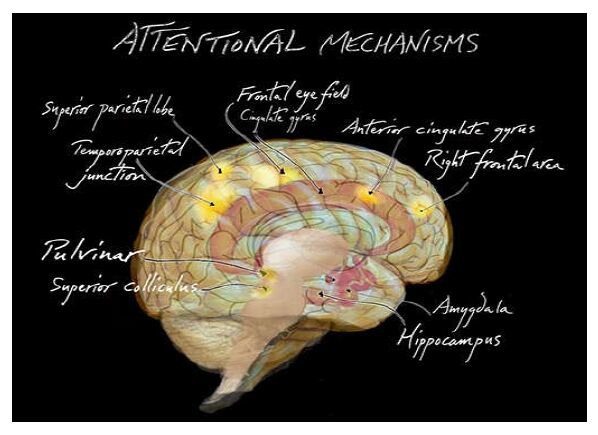
 DownLoad:
DownLoad: 